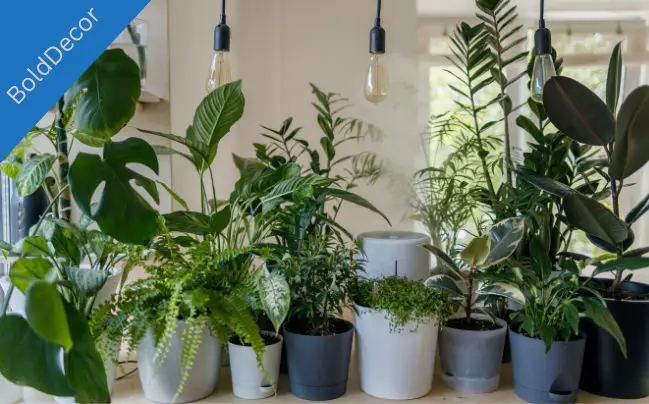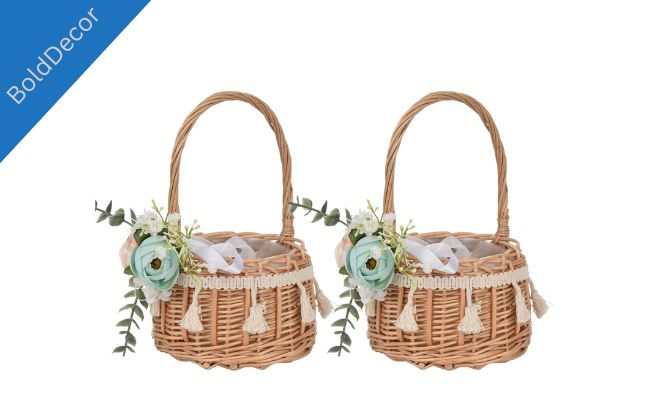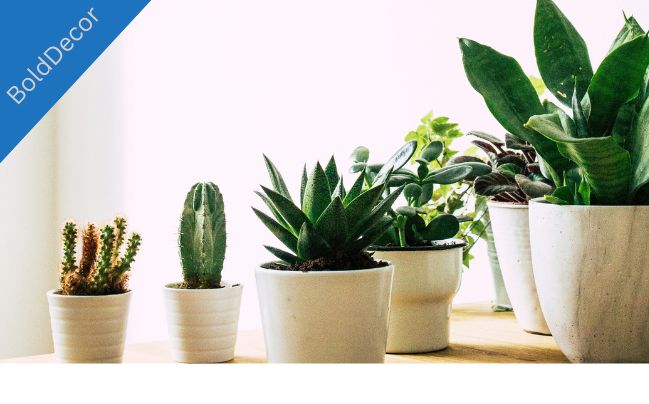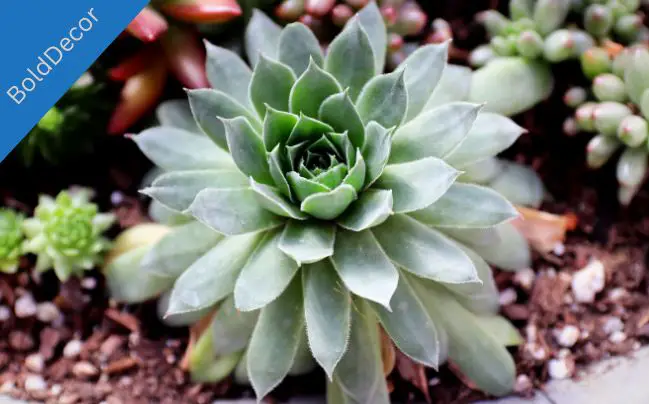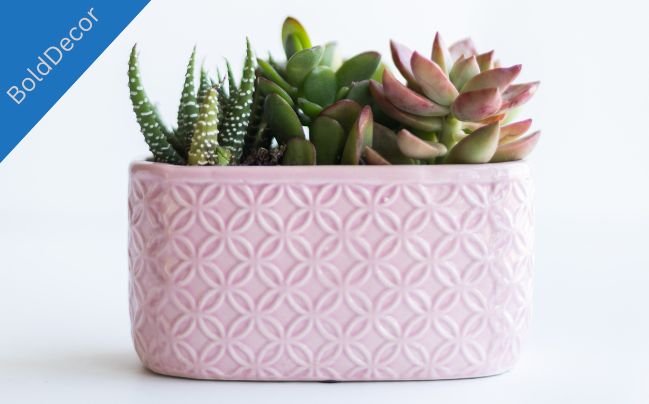Welcome to my comprehensive guide on indoor plants for beginners. If you’re new to indoor gardening and looking for easy, beginner-friendly, and low-maintenance indoor plants to get started with, then you’ve come to the right place.
With my experience in indoor gardening, I will guide you through every step of the way, from choosing the right plants to caring for them properly, so that you can enjoy the benefits of green living and a thriving indoor garden.
Key Takeaways
- Indoor plants for beginners are a great way to embrace green living and create a vibrant indoor garden.
- Easy, beginner-friendly, and low-maintenance indoor plants are the best way to start your indoor gardening journey.
- Choosing the right indoor plants is crucial for success. Factors like light requirements, water needs, and growth habits should be considered.
- Proper care and maintenance of indoor plants include watering, fertilizing, and addressing common pests and diseases.
- Potting and repotting, light and temperature requirements, and watering techniques also play a crucial role in the health and growth of indoor plants.
Table of Contents
Why Choose Indoor Plants for Beginners?
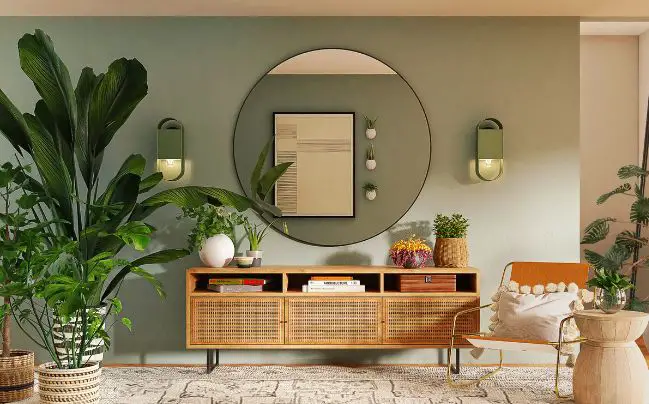
Are you looking to add some greenery to your living space but don’t know where to start? Look no further than indoor plants! As a beginner, houseplants are an excellent choice as they are easy to care for and offer a wealth of benefits. In this beginner’s guide to indoor plants, I’ll provide you with the best indoor plants for beginners and tips for getting started.
Benefits of Indoor Plants
Indoor plants offer a range of benefits, including:
- Improving air quality by reducing pollutants and increasing oxygen levels
- Reducing stress and promoting relaxation
- Adding beauty and visual interest to your living space
- Boosting productivity and concentration
With so many benefits, it’s no wonder that indoor plants have become increasingly popular in recent years.
Best Indoor Plants for Beginners
When it comes to selecting indoor plants for beginners, it’s important to choose ones that are easy to care for and can thrive in a range of indoor environments. Here are some top choices:
| Plant Name | Light Requirements | Water Needs | Growth Habit |
|---|---|---|---|
| Snake Plant | Low to bright indirect light | Water when soil is dry | Upright, spiky leaves |
| Pothos | Low to medium indirect light | Water when soil is dry | Trailing vines |
| Spider Plant | Bright indirect light | Water when soil is dry | Arching leaves with small “babies” |
These plants are all low maintenance and forgiving for beginners. They also look great in a variety of containers and can fit any aesthetic.
Getting Started with Indoor Plants
If you’re new to indoor gardening, there are a few things to keep in mind:
- Start with easy, beginner-friendly plants.
- Make sure your chosen plants have the proper light and water requirements and place them in appropriate spots in your living space.
- Use well-draining soil and containers with drainage holes to prevent root rot.
- Don’t overwater your plants as this can lead to drowning and root rot.
- Observe your plants regularly for signs of health and adjust your care routine as needed.
With these tips and the best indoor plants for beginners, you’ll be on your way to creating a beautiful and thriving indoor garden in no time!
Selecting the Right Indoor Plants for Beginners
Gardening indoors has become a trend, and it is not surprising that more and more people are looking for indoor plants for beginners. Before you go out and buy your first houseplant, you need to take a few things into consideration. Here are some essential indoor plants for beginners tips to get you started:
Beginner-friendly Houseplants
When choosing indoor plants for beginner gardeners, it’s crucial to pick plants known for being low maintenance and easy to care for. Some of the most popular beginner-friendly houseplants include:
- Snake plant
- Pothos
- Spider plant
- ZZ plant
- Peace Lily
These plants are easy to find in local garden stores, and they are generally hardy and resilient, making them good options for those who are new to indoor gardening.
Beginner Indoor Gardening Tips
Now that you have an idea of which plants to choose, it’s time to consider some beginner indoor gardening tips. First, you need to be aware of the lighting needs of your plants. For example, a snake plant can survive in low light environments, while a peace lily needs bright, indirect light to thrive. You should also pay attention to the humidity levels in your home. Some plants, like the spider plant, prefer higher humidity levels, while others, like the ZZ plant, can tolerate lower humidity.
Another important consideration when selecting indoor plants is the size of the container. It’s best to choose a container that is slightly larger than the root ball of the plant. Too large of a container can lead to overwatering and root rot. You should also use a well-draining soil mix that allows excess water to drain away from the roots.
Where to Buy Indoor Plants for Beginners
Indoor plants for beginners can be found at many local gardening stores, nurseries, and even big-box stores. It’s essential to buy plants that are healthy and free of pests. You can also purchase plants online, but it’s important to make sure they are shipped carefully and not damaged during transit.
With these beginner indoor gardening tips and indoor plants for beginners tips in mind, you are well on your way to creating a healthy and thriving indoor garden.
Easy Care and Maintenance for Indoor Plants
Caring for indoor plants doesn’t have to be a daunting task. With the right knowledge and tools, you can keep your indoor garden looking lush and vibrant. Here are some easy care and maintenance tips for low maintenance indoor plants and easy indoor plants for beginners:
Watering
Watering indoor plants may seem simple, but there are a few things to keep in mind. Firstly, it’s important to avoid overwatering. Most indoor plants prefer to dry out a bit between waterings, so be sure to check the soil moisture before watering. You can do this by sticking your finger about an inch into the soil. If it feels dry, it’s time to water. If it’s still moist, wait a few more days and check again.
Another tip is to water from the bottom up. Place your potted plant in a tray or saucer of water and allow it to soak up the water through the drainage holes. This allows the plant to take up the water it needs without risking water-logging the soil.
Fertilizing
Indoor plants benefit from regular fertilizing to promote healthy growth and vibrant foliage. Use a balanced, water-soluble fertilizer every 2-4 weeks during the growing season (spring and summer). Be sure to follow the instructions on the package for the correct dosage and application method.
Light
Most indoor plants prefer bright, indirect light. This means they should be placed near a window but out of direct sunlight. If your plant isn’t getting enough light, it may start to stretch or lean towards the light source. If this happens, you can rotate the pot periodically to promote even growth.
Pruning
Pruning is an important aspect of maintaining healthy and attractive indoor plants. It helps to remove dead or damaged leaves, promote new growth, and maintain the plant’s shape. Use a sharp, clean pair of scissors or pruning shears to make clean cuts just above a leaf node or stem junction.
Pest Control
Indoor plants can be susceptible to pests like spider mites, mealybugs, and scale insects. To prevent infestations, regularly inspect your plants for any signs of pests. If you do notice an infestation, use an insecticidal soap or neem oil spray to control the problem.
By following these simple care and maintenance tips, you can enjoy the beauty and benefits of growing plants indoors for beginners. With a little bit of effort, you can create a thriving indoor garden and embrace the joys of green living.
Potting and Repotting Indoor Plants
Potting indoor plants is a crucial step in ensuring their growth and well-being. As a beginner, it’s essential to understand the basics of potting and repotting indoor plants. Here are some helpful tips to get you started.
Choosing the Right Container
When selecting a container for your indoor plants, it’s essential to choose a pot with drainage holes to prevent water from accumulating and causing root rot. Additionally, ensure the pot is the right size for the plant you’re potting. As a general rule, the pot should be about 2 inches larger in diameter than the plant’s root ball.
Choosing the Right Potting Mix
The right potting mix is crucial for your indoor plant’s health. Choose a high-quality mix that’s formulated for indoor plants and contains ingredients like peat moss, perlite, and vermiculite. Additionally, avoid using garden soil, which can be too heavy and may contain pests and diseases.
Repotting Indoor Plants
As your indoor plants grow, they may outgrow their current pot and require repotting. Signs that a plant needs repotting include roots growing out of the drainage holes, wilted leaves, or the soil drying out quickly after watering. When repotting, choose a pot that’s one size up from the current pot, remove the plant from its old container, carefully separate the roots, and place it in the new pot with fresh potting mix.
Small Indoor Plants for Beginners
| Plant Name | Light Requirements | Water Needs | Growth Habit |
|---|---|---|---|
| Snake Plant | Low to bright, indirect light | Allow soil to dry between watering | Upright and compact |
| Spider Plant | Bright, indirect light | Keep soil evenly moist | Cascading and spreading |
| Pothos | Low to bright, indirect light | Allow soil to dry between watering | Cascading and trailing |
If you’re a beginner, starting with small indoor plants is a great option. Small indoor plants are easy to care for and are perfect for beginners who are just starting their indoor gardening journey. Some beginner-friendly small indoor plants include snake plants, spider plants, and pothos.
Light and Temperature Requirements for Indoor Plants
Proper lighting and temperature are essential for the health and growth of indoor plants. As a beginner, it’s crucial to understand the light and temperature requirements of different indoor plants to ensure they thrive in your indoor garden.
Light Requirements
Indoor plants have varying degrees of light requirements, and it’s essential to choose plants that match the light available in your indoor space. Some plants thrive in bright, direct sunlight, while others prefer low to moderate light conditions.
To determine the amount of light in your space, you can use a light meter, or simply observe the amount of natural light that enters the room throughout the day. Once you know the amount of light available, you can select plants that are suitable for the lighting conditions.
Some low maintenance indoor plants that do well in low to moderate light conditions include snake plants, pothos, and ZZ plants. If you have bright, direct light available, consider plants such as succulents, cacti, and spider plants.
Temperature Requirements
Indoor plants also have specific temperature requirements that are important for their growth and health. Most indoor plants do well in temperatures between 60 and 75 degrees Fahrenheit. However, it’s essential to research the specific temperature requirements of your plants to ensure they thrive.
In general, avoid placing indoor plants in areas with extreme temperature fluctuations, such as near doors or windows that are frequently opened. Additionally, ensure that your indoor garden is not placed in areas with drafts or areas that receive direct blasts of air conditioning or heating.
| Temperature | Effect on Plants |
|---|---|
| Below 55°F (12°C) | Can cause damage or death to most indoor plants |
| 55°F – 65°F (12°C – 18°C) | Most indoor plants will survive but may not thrive |
| 65°F – 75°F (18°C – 24°C) | Ideal temperature range for most indoor plants |
| Above 75°F (24°C) | Can cause damage or death to some indoor plants, especially those that prefer cooler temperatures |
By understanding the light and temperature requirements of indoor plants, you can create an ideal environment for your plants to thrive. Remember to research the specific needs of your plants and adjust your indoor gardening practices accordingly.
Watering Techniques for Indoor Plants
Proper watering techniques are essential for maintaining the health and well-being of indoor plants. Overwatering or underwatering can harm your plants, so it’s important to establish a good watering routine. Here are some indoor plants for beginners tips:
Determine When to Water Your Plants
The frequency of watering depends on the type of plant, the size of the container, and the environment. As a general rule, you should water your plants when the top inch of soil feels dry to the touch. You can also use a moisture meter or a bamboo skewer to check the moisture level of the soil.
Use the Proper Watering Method
The watering method depends on the plant and the container. Some plants prefer to be watered from the bottom, while others prefer to be watered from the top. When watering from the top, make sure to water the soil and not the leaves, as this can lead to fungal diseases. When watering from the bottom, place the container in a tray of water and let the soil absorb the water.
Provide Proper Drainage
Proper drainage is crucial for indoor plants. Containers with drainage holes allow excess water to escape, preventing the soil from becoming waterlogged. If your container doesn’t have drainage holes, you can place a layer of gravel or pebbles at the bottom of the container to allow water to flow freely.
Use the Right Amount of Water
Overwatering is one of the most common mistakes that beginners make with indoor plants. Make sure to water your plants thoroughly, but don’t let them sit in standing water. If you notice any water in the tray or saucer after watering, pour it out to avoid waterlogging the soil.
By following these indoor plants for beginners tips, you can establish a good watering routine and keep your plants healthy and happy!
Troubleshooting Common Issues with Indoor Plants
Indoor gardening can be a rewarding and fulfilling experience, but as a beginner, you may encounter some issues with your plants. Don’t worry, it happens to the best of us! In this section, I will provide you with some beginner indoor gardening tips to help you troubleshoot common issues and keep your indoor plants healthy and vibrant.
Yellowing Leaves
One of the most common issues with indoor plants is yellowing leaves. This can be caused by a variety of factors, such as overwatering, underwatering, or lack of sunlight. To address this issue, first, check the soil moisture level. If the soil is too wet, allow it to dry out before watering again. If the soil is dry, give your plant a good watering.
If your plant is not receiving enough sunlight, consider moving it to a brighter location or providing artificial light. However, be careful not to place it in direct sunlight, which can scorch the leaves.
Pest Infestations
Another common issue with indoor plants is pest infestations, such as spider mites or mealybugs. To prevent and address pest problems, regularly inspect your plants for any signs of infestation, such as spider webs or sticky residue on leaves.
If you do spot pests, isolate the affected plant immediately to prevent them from spreading to other plants. Then, treat the infestation with an insecticidal soap or neem oil, following the instructions on the label carefully.
Wilting
If your indoor plant is wilting, it may be a sign of root rot, which is caused by overwatering or poor drainage. To address this issue, remove the affected plant from its pot and inspect the roots. If they are brown and mushy, trim them back to healthy tissue and repot the plant in fresh, well-draining soil.
In general, it’s important to avoid overwatering indoor plants and ensure they have proper drainage to prevent root rot.
Bottom line
Thank you for reading my comprehensive guide to indoor gardening for beginners. I hope you found it informative and helpful in starting your indoor gardening journey. Remember, indoor plants are a great way to improve air quality, reduce stress, and add beauty to your living space.
As a beginner, selecting the right indoor plants is crucial for success. Choose beginner-friendly houseplants that suit your preferences and the conditions of your home. Follow the tips and considerations I provided in Section 3 to make informed choices for your indoor garden.
Proper care and maintenance are essential for the health and vitality of your indoor plants. Refer to Section 4 for easy care and maintenance tips to ensure your plants thrive in an indoor environment. Pay attention to their light and temperature requirements, potting and repotting needs, and watering techniques.
If you encounter any problems with your indoor plants, don’t worry. Refer to Section 8 for solutions to common issues that beginners may face. With practice and patience, you can develop a green thumb and enjoy the many benefits of indoor gardening.
Thank you again for reading, and happy indoor gardening!
FAQ
Why should I choose indoor plants as a beginner?
Indoor plants are a great choice for beginners because they improve air quality, reduce stress, and add beauty to your living space. They are also easy to care for and there are many beginner-friendly options available.
How do I select the right indoor plants as a beginner?
When selecting indoor plants as a beginner, consider factors such as light requirements, water needs, and growth habits. Choose plants that are suited to your indoor environment and match your level of gardening experience.
What are some easy care and maintenance tips for indoor plants?
To care for your indoor plants, make sure to provide them with the right amount of water and light. Monitor for pests and diseases, and fertilize as needed. Regularly clean the leaves and remove any dead or yellowing foliage.
How do I pot and repot indoor plants?
When potting and repotting indoor plants, use a suitable potting mix and choose the right container size. Take care not to damage the roots during the process. Repot plants when they outgrow their current containers.
What are the light and temperature requirements for indoor plants?
Different indoor plants have different light and temperature requirements. Some plants prefer bright indirect light, while others can thrive in low light conditions. Make sure to position your plants accordingly and avoid extreme temperature fluctuations.
How should I water my indoor plants?
Watering techniques for indoor plants vary depending on factors such as plant type, potting mix, and environmental conditions. Check the moisture level of the soil before watering and ensure proper drainage. Avoid overwatering, as it can lead to root rot.
What should I do if I encounter issues with my indoor plants?
If you encounter issues with your indoor plants, such as yellowing leaves or pest infestations, identify the problem and take appropriate action. This may involve adjusting watering or lighting, treating pests, or repotting the plant. Seek advice from a gardening expert if needed.
What should I do after completing this guide?
Congratulations on completing your easy guide to indoor gardening for beginners! Now, you can start applying the tips and advice provided to create a thriving indoor garden. Remember to start with beginner-friendly plants, provide proper care and maintenance, and enjoy the benefits of green living.

